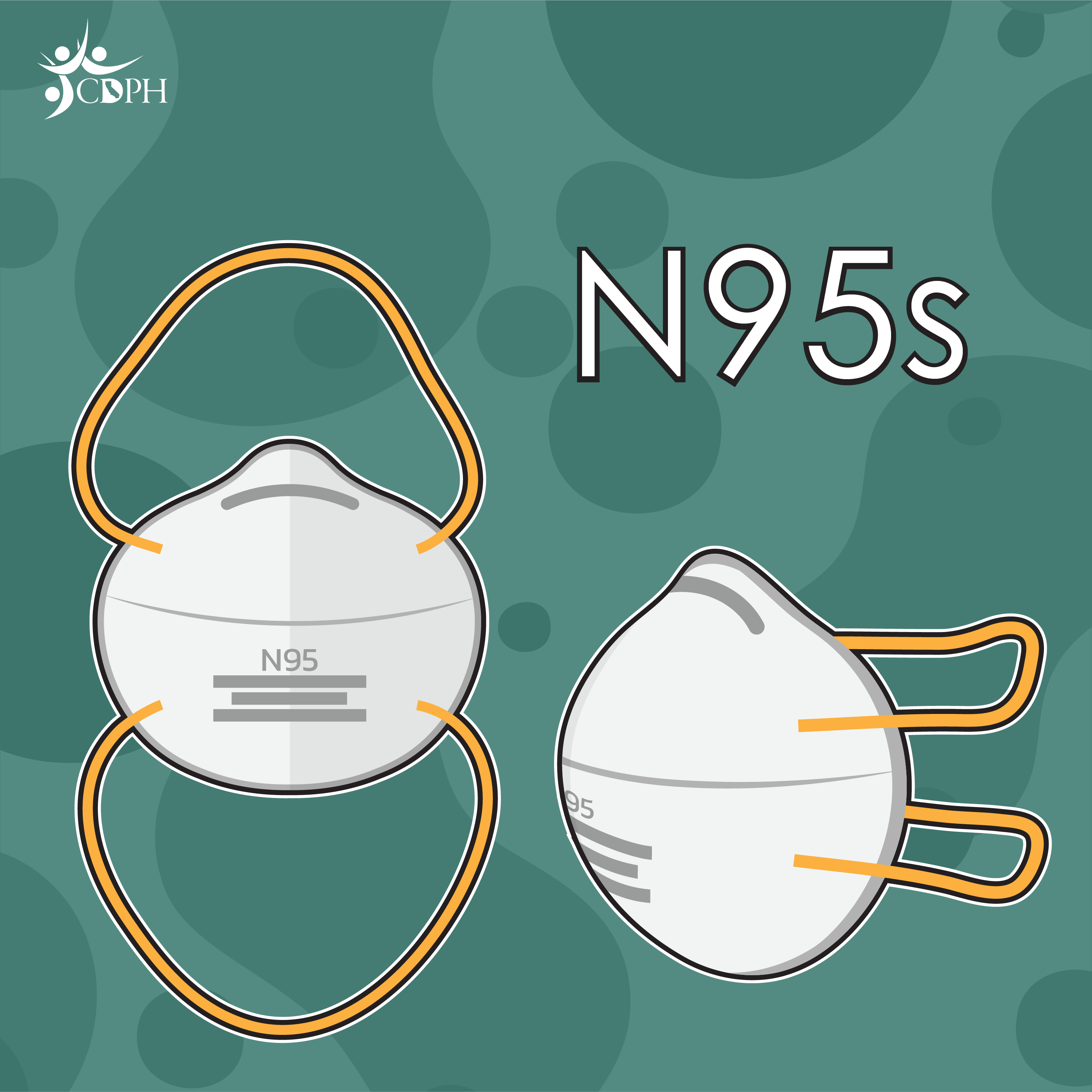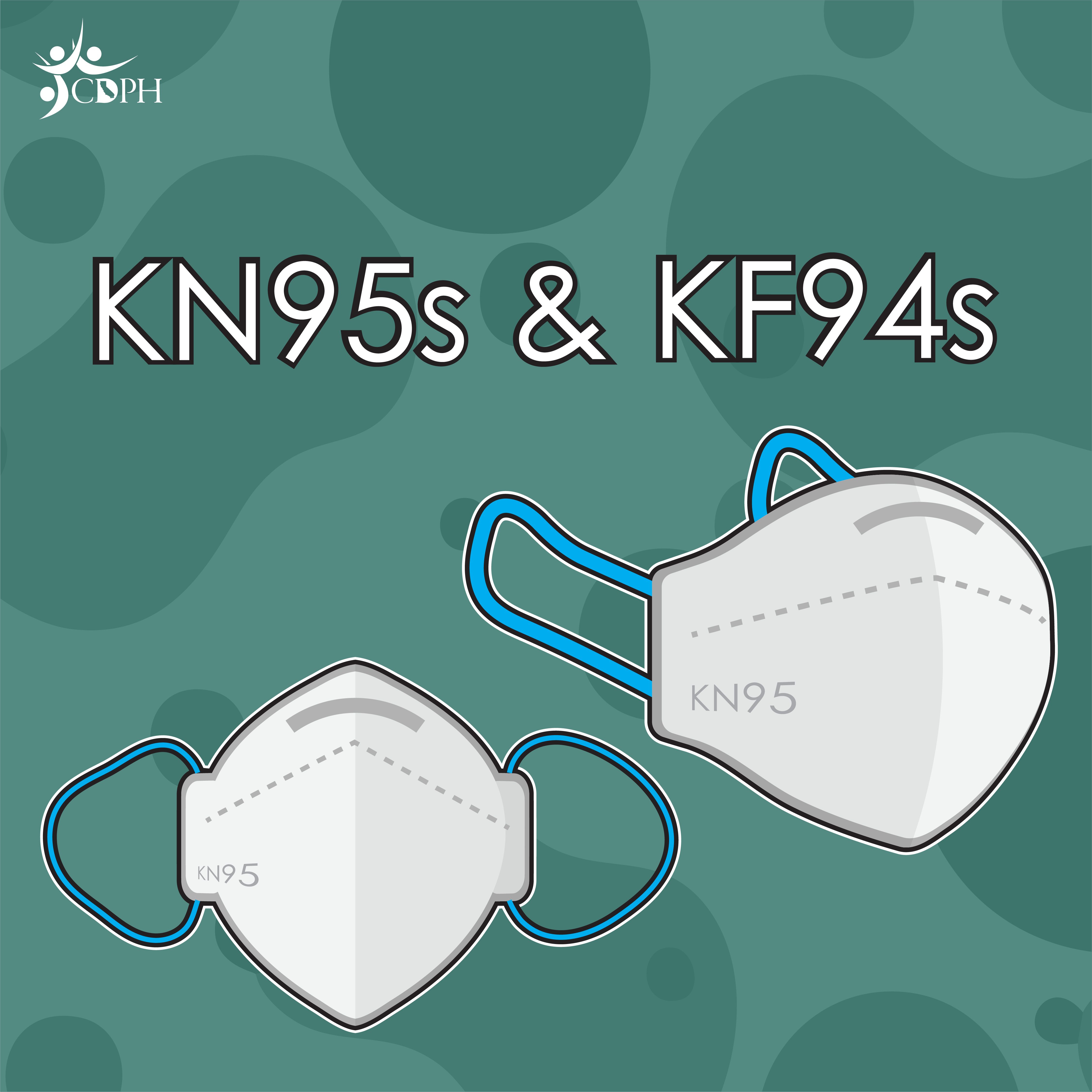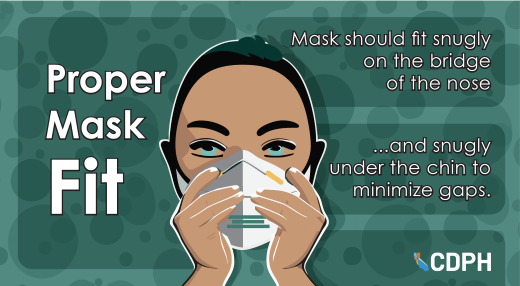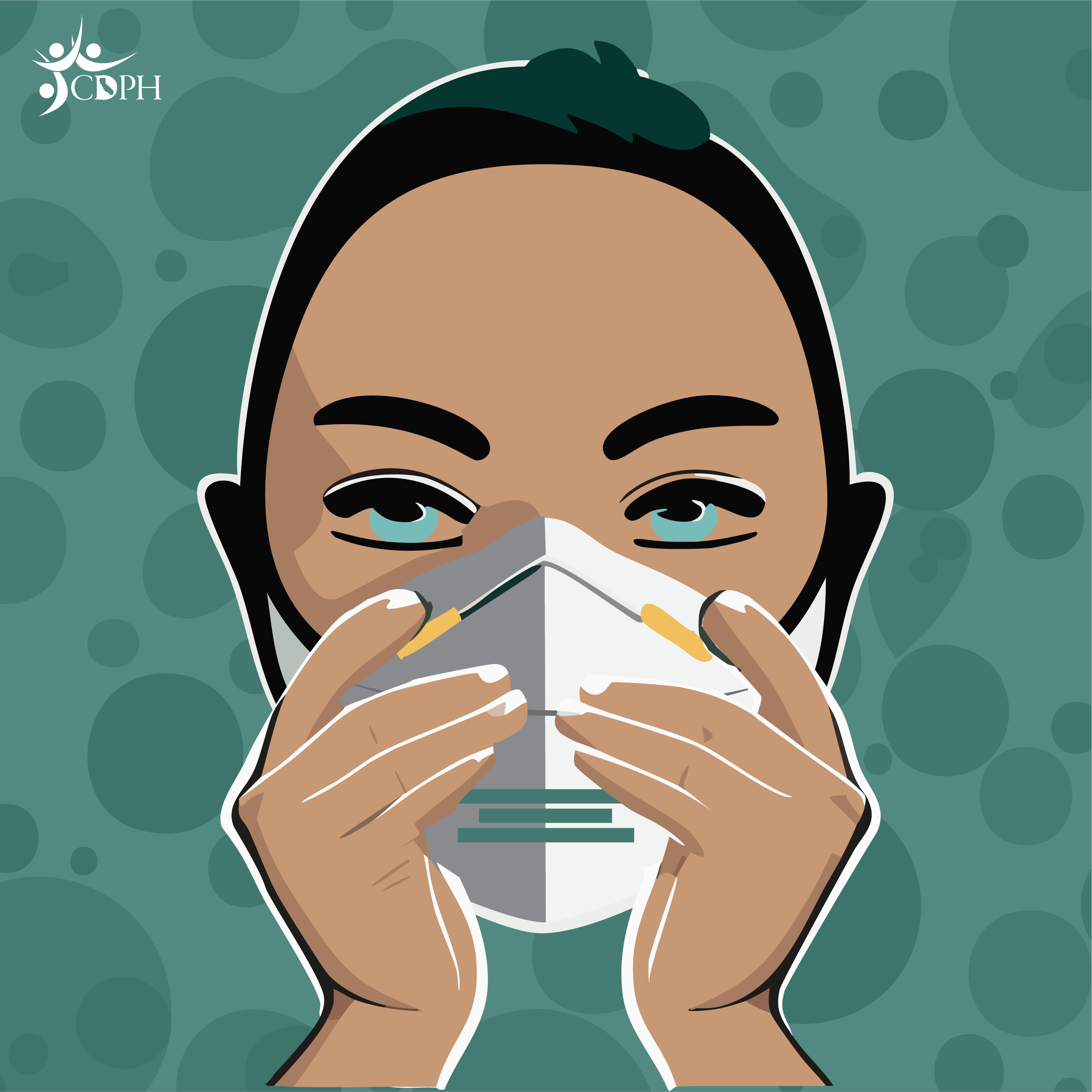When and Why to Wear a Mask
The Benefits of Masking and Tips for Choosing the Right Mask
Wearing a high-quality mask that fits well and has good filtration helps to protect you. It helps to protect you from breathing in viruses, wildfire smoke, and other particles or germs in the air.
Respirators, such as N95s or KN95s are the best type of masks. They offer more protection because they generally have better fit and filtration. Surgical masks and cloth face coverings, have less filtration than respirator masks. You can buy N95 and KN95 respirators at drugstores, hardware supply stores, and online.
When to Consider Wearing a Mask
If you believe you were exposed and will be in contact with someone who is high risk, consider wearing a high-quality mask.
If you are at high-risk of becoming severely ill, consider wearing a high-quality mask (respirator). For example when you are in an indoor public setting with poor ventilation, or when you are traveling on public transportation.
People who are at high risk for severe respiratory infections include:
Older adults, especially those 65 and older
People with certain chronic or medical conditions such as a heart disease or cancer
People with weakened immune systems
People who are pregnant or were recently pregnant
People with disabilities
People who are in a skilled nursing facility and other long term care facilities
Infants, especially those who are less than 6 months, and young children (less than 5 years)
Protection Against Harmful Environmental Exposures
Wildfire Smoke
When it’s smoky outside the best way to prevent smoke inhalation is to stay indoors. People who must go outside or work outdoors for long periods of time in areas with heavy smoke or where ash is present should wear a well-fitting N95 or P100 respirator mask. These masks are the only kind capable of filtering the harmful particles that can cause respiratory issues.
Valley Fever
In certain areas of California, the fungus that causes Valley fever grows in the soil and may be in outdoor dust. When working or spending time outdoors in these dusty areas, wear a fitted respirator. Use a respirator to protect you from breathing in dust and fungal spores that can cause Valley fever. Learn more about Valley fever safety in the workplace and Valley fever prevention for the general public.
Choosing the right mask
N95s N95 respirators offer the best protection. They provide the most efficient filtration. Adults should choose an N95 respirator that has been professionally fit tested, and approved by NIOSH. N95s have two head straps and a tight fit. Authentic NIOSH-approved N95 respirators should have specific markings. Learn more about counterfeit (fake) respirator masks and how to use N95 respirators.
| KN95s
KN95s and KF94s are respirators that meet international standards. They provide good protection, but less protection than N95s. Most KN95s and KF94s have ear loops, which may provide a less-snug fit than respirators with head straps such as N95s.
If you choose to use a KN95, use one that has been tested by NIOSH. That has at least "filtration efficiency" of 95% or higher. These respirators are not approved NIOSH standards for use in the workplace when respirators are required.
|

| 
|
Fit
 A respirator should fit snugly to your face. This includes covering both your nose and mouth, with no gaps between the mask and your skin. They should fit comfortably on the bridge of nose and snugly on chin to minimize gaps, based on manufacturer’s instructions. If your respirator has any gaps, it will allow the flow of unfiltered air into your lungs. Also, any facial hair will prevent the respirator from working properly. Maintain a clean shave (PDF), if possible.
A respirator should fit snugly to your face. This includes covering both your nose and mouth, with no gaps between the mask and your skin. They should fit comfortably on the bridge of nose and snugly on chin to minimize gaps, based on manufacturer’s instructions. If your respirator has any gaps, it will allow the flow of unfiltered air into your lungs. Also, any facial hair will prevent the respirator from working properly. Maintain a clean shave (PDF), if possible.
Check for any gaps by cupping your hands around the outside edges of the respirator. Make sure no air is flowing from the area near your eyes or from the sides of the respirator. If the respirator has a good fit, you will feel warm air come through the front of the respirator only. You may be able to see the respirator mask's material move in and out with each breath.
Change your mask as needed. Do not wear a dirty mask. Throw away disposable masks or respirators that become wet or dirty.
Surgical Masks
Surgical masks include various types of loose-fitting disposable masks. These masks can block large droplets but don’t fit close to the face. Even when worn tightly, surgical masks provide much less protection than a respirator. | Cloth MasksCloth masks are less protective than surgical masks or high-quality respirators. |

| 
|
For Children
Masks can be worn safely by children 2 years of age and older. There are rare exceptions. Children under age 2 should not wear a mask. Choose a mask for your child that has the best protection, best fit, and one your child will wear.
Masks should fit over the nose and under the chin with no gaps around the edges. They should not prevent your child from seeing. KN95s are available in “child” or “extra-small” sizes. N95s in size “small” may fit older children but may not fit younger or smaller children. There are no NIOSH-approved N95 masks for children currently.
Who Should Not Wear a Mask
- Children under 2 years of age
- People with breathing, lung or heart issues
- People who are unconscious or unable to remove the mask without help
Wearing a mask may be difficult for people with sensory, cognitive, or behavioral conditions. They may also be difficult for people who are hard of hearing or people who communicate with a person who is hard of hearing because seeing the mouth may be needed to communicate.
If you have concerns about wearing a mask, talk to your health care provider before using one.
Other Considerations
A person who is wearing a mask cannot be kept from joining an activity or entering a venue (e.g., schools or childcare). Unless wearing a mask would pose as a safety hazard.
This information is intended for a general audience. Some workplaces (PDF), local health departments, and Cal/OSHA may have more recommendations or requirements for wearing a mask.